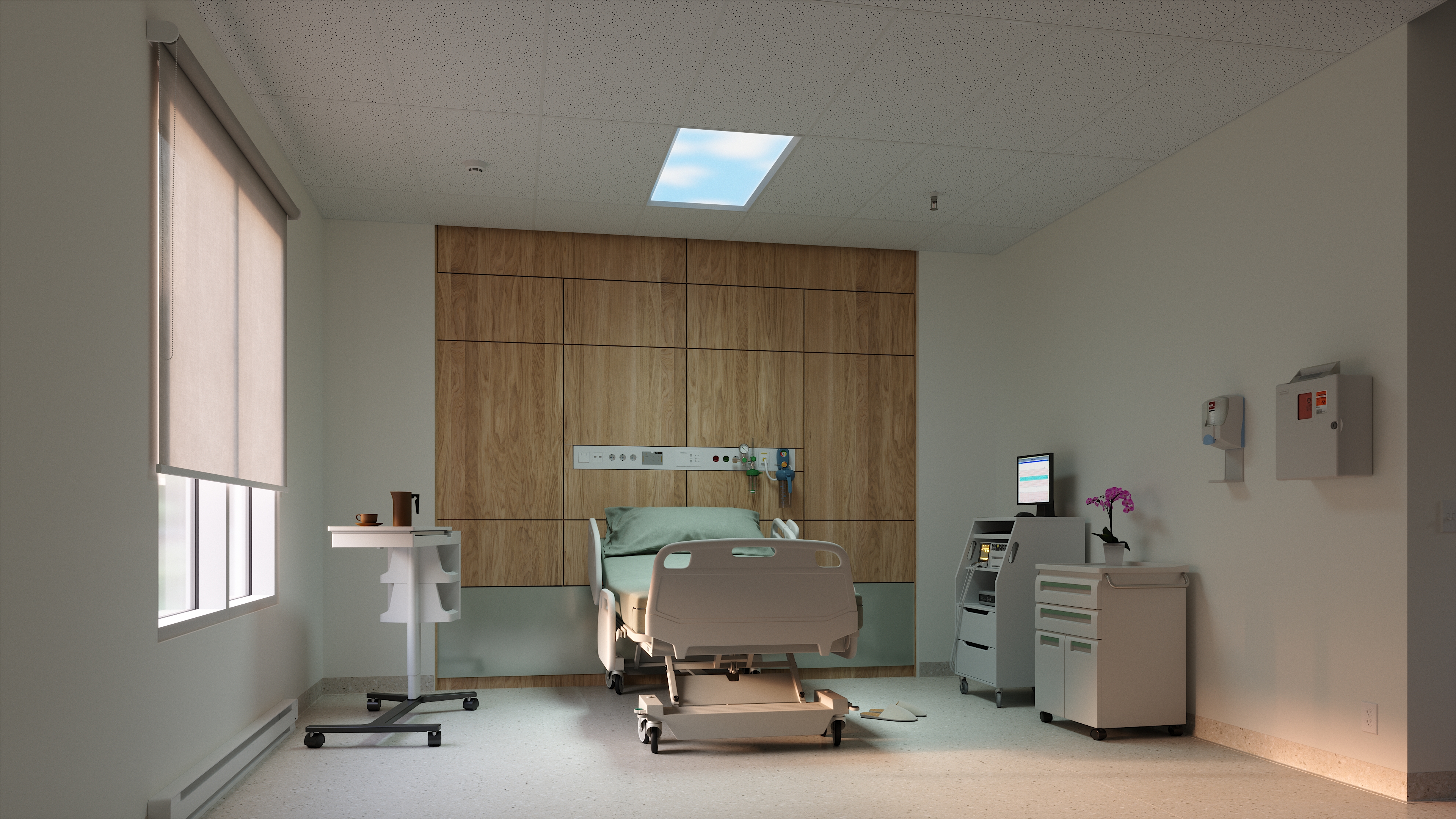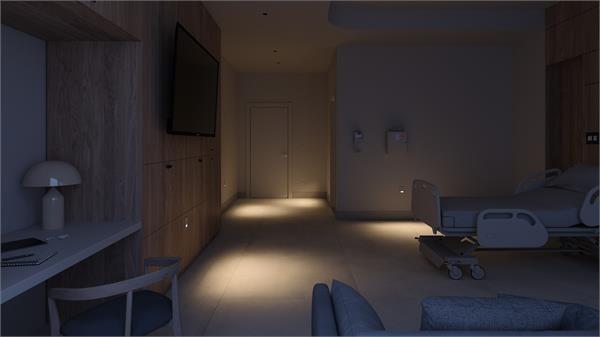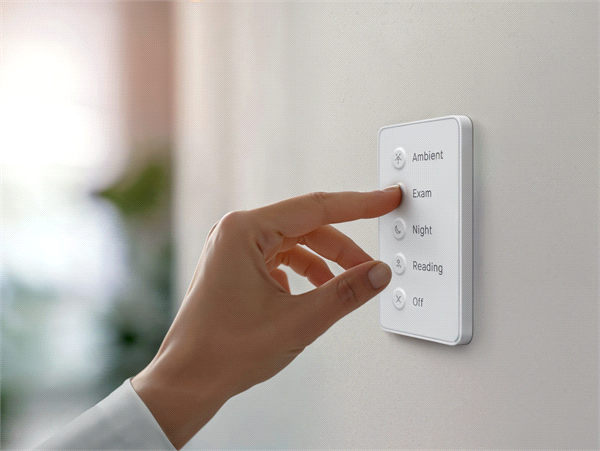Lighting impacts much more than visibility. Quality lighting in schools supports student comfort, focus, behavior, and health — and even test scores. Studies show that lighting design choices can directly affect learning outcomes, making it an essential consideration in school design.
How can lighting influence student learning
and wellbeing?
Meet Todd

Illuminating Insights



Todd Quinlan
Senior Specification Sales Manager

Lighting for Learning.

Why is color rendering so important in classrooms?



Todd Quinlan graduated from the University of Colorado with an emphasis in Lighting & Architectural Engineering.For nearly 25 years, he has worked in the industry as a Lighting Designer, Lighting Agent, and in Manufacturer Sales. Todd’s broad understanding of the lighting industry, lighting science and interests in emerging technologies helps him promote complete illumination systems from the luminaire to the controls and IoT environment they are being installed into.
Download Todd's full guide to Lighting for Learning
There are four key lighting attributes that I believe should always be considered when creating a classroom lighting design because they directly affect the learning environment. These include:
What are the most important attributes of
classroom lighting?
Why is color rendering so important in classrooms?
Students often learn through color-dependent tasks (art, science, etc.). Good color rendering ensures accuracy. While CRI has been used for decades, the newer TM-30 metric provides a more complete picture of how colors appear under light — and can help
balance quality with cost.
I would like to highlight a few different lighting practices that contribute to evidence-based design.
What lighting practices contribute to evidence-based designs?
Giving control to the patient – If you put yourself in a patient’s shoes you realize how overwhelming it is to go into a healthcare facility overnight or in some cases for a long period of time. By simply giving patients control of their surround, you can increase their sense of comfort. This means allowing patients to control the lighting in their space directly from their bed. You can accomplish this by integrating lighting controls with a pillow switch or pillow speaker to give the patient control of their light levels.
Visual distraction – Another way to increase the sense of comfort for patients is to use lighting to provide a visual distraction. This is done not only in the patient room, but also in chemotherapy treatment spaces, MRI and radiology, dialysis and many others. As patients are experiencing these uncomfortable and sometimes frightening spaces, you can use lighting to provide calming imagery of the natural environment like clouds, trees, or an aquatic landscape.
Design choices specific to desired improved outcomes – While many evidence-based lighting techniques are centered around providing a sense of comfort for the patient, an evidence-based design project can be used to improve a number of outcomes. For example, it may be that a healthcare facility would like to decrease its number of patient falls or perhaps a hospital is looking to reduce hospital acquired infections. A unique evidence-based lighting approach will be needed to address the desired outcomes on each project.
Students often learn through color-dependent tasks (art, science, etc.). Good color rendering ensures accuracy. While CRI has been used for decades, the newer TM-30 metric provides a more complete picture of how colors appear under light — and can help
balance quality with cost.
How does dimming affect learning environments?
Students and teachers need different light levels for different activities — from test-taking to movie-watching. Our eyes perceive brightness differently than light meters measure it, which makes dimming strategies critical. Using logarithmic dimming and setting proper minimum levels helps ensure lighting matches human perception.

Observe™ cloud, uses an innovative optical treatment to create a realistic sky mode providing patients with a connection to nature. Still, the Observe has all the utility and capability of a patient room fixture designed to meet RP-29 requirements.
Assure™ nightlight. Lights' quiet purpose. - For finding your way, feeling secure in an unfamiliar space or when a health condition affects normal perception, our nightlight is always there, a quiet presence that reassures.
SensorSwitch™ Sealed Wall Switch
provides easy-to-use lighting controls in medical environments and can be configured to operate other patient room systems allowing for seamless patient room integration, empowering patients to control their room environment from the bed, ensuring a more personalized and comfortable experience without needing assistance.



1.
2.
3.



Meet Tommy
Tommy Nichols, LC, EDAC is the Business Development Director for Healthcare under Acuity Brands Lighting specializing in behavioral health, healthcare, and pathogen reduction solutions. Tommy has grown into his role as an 11-year professional in the lighting industry, serving on the IES Healthcare Facilities Lighting Committee. His areas of expertise include behavioral health lighting, the needs of healthcare specialty spaces, pathogen reduction solutions to make people feel safer, and a dedication to developing solutions to expedite patient healing. Tommy earned his Evidence-Based Design Accreditation and Certification through the Center for Health Design.
Hear Tommy speak with Edison Report about Evidence-Based Design

Evidence-based design is one of the techniques that's being incorporated primarily on healthcare relevant projects, but it's translatable for so many of the different types of projects that we work on. In essence, evidence-based design is about using research to make decisions around the built environment to improve some kind of outcome. When evidence-based design is deployed, the methodology is used throughout the entire project, beginning with design through construction, and post-occupancy.
What is evidence-based design?
Is there a certification process for evidence-based design?

Evidence-based design really picked up traction in the 2000s, but it was born out of a study conducted in 1984 by Dr. Roger Ulrich. This study compared two sets of patients recovering from surgery. One set of patients recovered in a room with a view of only a brick wall, while the other set of patients’ recovery rooms had an unobstructed view of nature with a small stand of trees. The study found that patients with access to views of the natural environment had an expedited recovery in comparison to those that did not. Additionally, these patients reported feeling better connectivity to their care team and needed less pain-relieving medication than those that did not have the natural environment exposure.
Learn more about Dr. Ulrich’s study here.
At the very beginning of the project, an interdisciplinary team is assembled to ensure commitment from all parties to adhering to evidence-based design practices to achieve desired outcomes for the project. This team can include the architect, engineer, lighting designer, contractor, healthcare system executives, perhaps nurses and doctors, and product manufacturers. While it may seem difficult to get all of these people in a room this early into the project, it is vital for evidence-based design and particularly important for healthcare projects. At the end of the day healthcare facilities are businesses and investing upfront in evidence-based design tactics can have a positive impact on the bottom line down the road. Quicker recovery times leads to servicing more patients and higher patient satisfaction scores through the HCAHPS survey can lead to increased hospital funding. These benefits give healthcare systems more incentives to incorporate evidence-based design practices.
At the end of the day, the right solution for a healthcare project utilizing evidence-based design practices is going to depend on the desired improved outcomes of the project. Use the Care Collection to find Acuity Brand’s curated list of trusted and vetted lighting and lighting controls suitable for patient care.
Additionally, check out some of my favorite go-to products enabled with features to improve patient comfort in healthcare environments.



Observe™ cloud, uses an innovative optical treatment to create a realistic sky mode providing patients with a connection to nature. Still, the Observe has all the utility and capability of a patient room fixture designed to meet RP-29 requirements.
Assure™ nightlight. Lights' quiet purpose. - For finding your way, feeling secure in an unfamiliar space or when a health condition affects normal perception, our nightlight is always there, a quiet presence that reassures.
SensorSwitch™ Sealed Wall Switch
provides easy-to-use lighting controls in medical environments and can be configured to operate other patient room systems allowing for seamless patient room integration, empowering patients to control their room environment from the bed, ensuring a more personalized and comfortable experience without needing assistance.
Yes! The Center for Health Design offers a certification program for evidence-based design. This program is not only offered to designers, but anyone who participates in any phase of a project including contractors, executive staff of healthcare networks, architects, engineers, lighting designers and even product manufacturers. Through the certification, you learn not only how to apply an evidence-based process to facility design, but also how to measure and report results.
Learn more about the Center for Health Design’s Evidence-Based Design Accreditation and Certification (EDAC)
When did evidence-based design first come into practice?
What does an evidence-based healthcare design project look like?
I would like to highlight a few different lighting practices that contribute to evidence-based design.
Giving control to the patient – If you put yourself in a patient’s shoes you realize how overwhelming it is to go into a healthcare facility overnight or in some cases for a long period of time. By simply giving patients control of their surround, you can increase their sense of comfort. This means allowing patients to control the lighting in their space directly from their bed. You can accomplish this by integrating lighting controls with a pillow switch or pillow speaker to give the patient control of their light levels.
Visual distraction – Another way to increase the sense of comfort for patients is to use lighting to provide a visual distraction. This is done not only in the patient room, but also in chemotherapy treatment spaces, MRI and radiology, dialysis and many others. As patients are experiencing these uncomfortable and sometimes frightening spaces, you can use lighting to provide calming imagery of the natural environment like clouds, trees, or an aquatic landscape.
Design choices specific to desired improved outcomes – While many evidence-based lighting techniques are centered around providing a sense of comfort for the patient, an evidence-based design project can be used to improve a number of outcomes. For example, it may be that a healthcare facility would like to decrease its number of patient falls or perhaps a hospital is looking to reduce hospital acquired infections. A unique evidence-based lighting approach will be needed to address the desired outcomes on each project.
1.
2.
3.
What lighting practices contribute to evidence-based designs?
What solutions does Acuity Brands offer to contribute to evidence-based design for healthcare projects?



Illuminating Insights
Evidence-based Design

Featuring: Tommy Nichols, LC, EDAC
Business Development Director for Healthcare at Acuity Brands
